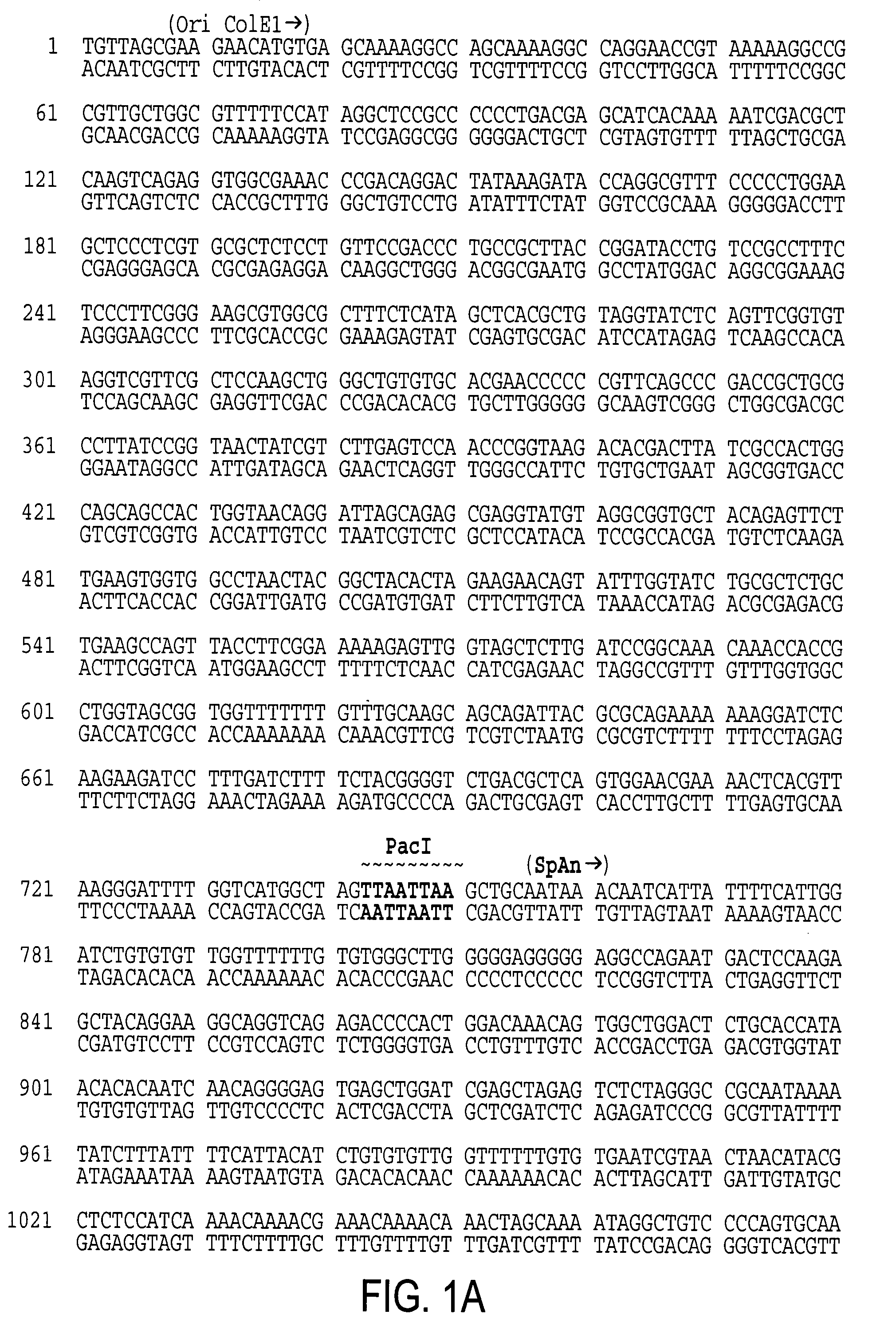CE7-specific redirected immune cells
a technology of immune cells and ce7, applied in the field of redirected immune cells, which can solve the problems of inability to salvage chemotherapy, and inability to achieve salvage chemotherapy
- Summary
- Abstract
- Description
- Claims
- Application Information
AI Technical Summary
Benefits of technology
Problems solved by technology
Method used
Image
Examples
example 1
[0057]Construction of a scFvFc:ζ cDNA Incorporating the CE7 VH and VL Sequences and Expression of the Construct in T-cells
[0058]Based on the sequences published by Amstutz et al., PCR was carried out on cDNA generated from the CE7 hybridoma and cloned VH and VL segments were isolated and sequenced [54]. Referring now to FIG. 2A, there is shown a schematic of the CE7R / scFvFc:ζ chimeric receptor. A full length scFvFc:ζ cDNA designated CE7R was constructed using method well known in the art by PCR splice overlap extension and consists of the human GM-CSF receptor alpha chain leader peptide, CE7 VH, Gly-Ser linker, CE7 VL, human IgG1 Fc, human CD4 TM, and human cytoplasmic zeta chain. The amino acid sequence of the receptor is shown in SEQ ID NO:2.
[0059]Referring now to FIG. 2B, there is shown a plasmid comprising the CE7R / scFvFc:ζ chimeric receptor in an expression vector. Using methods well known in the art, the cDNA construct containing the CE7R / scFvFc:ζ chimeric receptor was ligated...
example 2
Anti-Neurobalstoma Effector Functions of T Cells Expressing the CE7R Chimeric Immunoreceptor
IL-2 Production
[0062]Referring now to FIG. 5, there is a graphical representation which shows the production of IL-2 by T-cells expressing the CE7R / scFvFc:ζ chimeric receptor that are co-cultured with neuroblastoma cells. Using techniques known to those skilled in the art and discussed in detail in the following examples, the function of the CE7R chimeric immunoreceptor in T cells was first assessed by expressing this scFvFc:ζ construct in Jurkat T cells. CE7R+ Jurkat transfectants produced IL-2 when co-cultured with a panel of neuroblastoma cell lines. IL-2 production was antigen specific as evidenced by the observations that mock transfected Jurkat cells are not activated to produce IL-2 when exposed to the same neuroblastoma stimulators and that IL-2 production was inhibited in a dose-dependent fashion by the addition to culture of soluble CE7 mAb.
Cytotolytic Activity
[0063]Referring now to...
example 3
Generation and Characterization of T Cell Clones for Therapeutic Use
[0064]All T cells administered are TCR a / b+ CD4−CD8+ scFvFc:ζ+ T cell clones containing unrearranged chromosomally integrated plasmid DNA. T cells are isolated from the peripheral blood of patient's with recurrent / refractory neuroblastoma. Materials and methods employed to isolate, genetically modify, and expand CD8+ T cell clones from healthy marrow donors are detailed in Examples 4–8. T cell clones genetically modified to express the CE7R scFvFc:ζ chimeric immunoreceptor and HyTK are selected for:[0065]a. TCRa / b+, CD4−, CD8+ surface phenotype as determined by flow cytometry.[0066]b. Presence of a single copy of chromosomally integrated plasmid vector DNA as evidenced by Southern blot.[0067]c. Expression of the scFvFc:ζ gene product as detected by Western blot.[0068]d. Specific lysis of human CE7+ cell lines in 4-hr chromium release assays.[0069]e. Dependence on exogenous IL-2 for in vitro growth.[0070]f. Mycoplasm...
PUM
| Property | Measurement | Unit |
|---|---|---|
| concentration | aaaaa | aaaaa |
| volume | aaaaa | aaaaa |
| pH | aaaaa | aaaaa |
Abstract
Description
Claims
Application Information
 Login to View More
Login to View More - R&D
- Intellectual Property
- Life Sciences
- Materials
- Tech Scout
- Unparalleled Data Quality
- Higher Quality Content
- 60% Fewer Hallucinations
Browse by: Latest US Patents, China's latest patents, Technical Efficacy Thesaurus, Application Domain, Technology Topic, Popular Technical Reports.
© 2025 PatSnap. All rights reserved.Legal|Privacy policy|Modern Slavery Act Transparency Statement|Sitemap|About US| Contact US: help@patsnap.com



